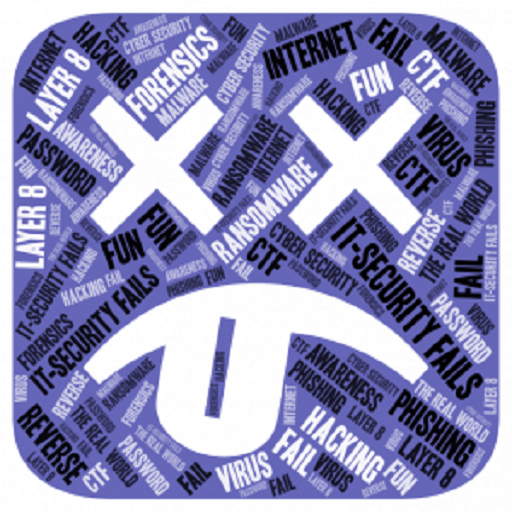I recently wrote a Flask web application in Python. When I put it online, I of course ran Nikto over it. Since I was immediately confronted with the usual suspects, I wanted to write down the solution for this weak point as a reminder to myself and possibly for your support.
Vulnerabilities
What vulnerabilities do we encounter again and again? During my day job I keep coming across these messages:
nikto -host https://beispiel_webservice.de
- Nikto v2.1.6
---------------------------------------------------------------------------
+ Target IP: 127.0.0.1
+ Target Hostname: beispiel_webservice.de
+ Target Port: 443
---------------------------------------------------------------------------
+ SSL Info: Subject: /CN=beispiel_webservice.de
Altnames: beispiel_webservice.de
Ciphers: TLS_AES_256_GCM_SHA384
Issuer: /C=US/O=Let's Encrypt/CN=R3
+ Start Time: 2021-11-24 11:33:57 (GMT1)
---------------------------------------------------------------------------
+ Server: nginx
+ The anti-clickjacking X-Frame-Options header is not present.
+ The X-XSS-Protection header is not defined. This header can hint to the user agent to protect against some forms of XSS
+ The X-Content-Type-Options header is not set. This could allow the user agent to render the content of the site in a different fashion to the MIME type
+ Allowed HTTP Methods: GET, OPTIONS, HEAD
+ 7499 requests: 0 error(s) and 4 item(s) reported on remote host
+ End Time: 2021-11-24 11:45:27 (GMT1) (690 seconds)
---------------------------------------------------------------------------
+ 1 host(s) testedAnti-Clickjacking X-Frame-Options
Clickjacking is when the attacker uses various transparent or opaque layers to trick a user into clicking on a link. These links are embedded in pages and point to other pages.... in simplified terms.
This error can be prohibited or configured by using the X-Frame-Options header.
All that is needed is to set the header:
X-Frame-Options: DENY #Es wird vollständig verweigert, in einen Frame/iframe geladen zu werden.
X-Frame-Options: SAMEORIGIN #Erlaubt nur, wenn die Seite, die geladen werden soll, den gleichen Ursprung hat.
X-Frame-Options: ALLOW-FROM URL #Es erlaubt einer bestimmten URL, sich selbst in einem Iframe zu laden. Bitte beachten Sie jedoch, dass nicht alle Browser dies unterstützen.In nginx the header is added in the config file via add_header X-Frame-Options "DENY"; and in Apache via Header set X-Frame-Options: "SAMEORIGIN".
X-XSS-Protection header
The X-XSS Protection Header protects the website from potential cross-site scripting. In modern browsers, however, this header is already deprecated and can lead to client problems. Nevertheless, it is recommended to set X-XSS-Protection to 0.
In nginx the header is added in the config file via add_header X-XSS-Protection "0; mode=block"; and in Apache via Header set X-XSS-Protection "0; mode=block".
HTTP methods
the various HTTP methods GET, POST, HEAD and so on, can also be used to execute mischief and mischief on the web pages. Of course, malicious code can also be placed on a web server using these methods.
Therefore, one should check which methods are really needed and the unnecessary methods can be forbidden.
In nginx you would put the following code in the server section
add_header Allow "GET, POST, HEAD" always;
if ( $request_method !~ ^(GET|POST|HEAD)$ ) {
return 405;
}Please be careful to only disallow the methods you do not want to offer.
X-Content-Type-Option
The X-Content-Type option header in HTTP responses is used by the server to indicate that MIME types as specified in the Content-Type (en-US) headers should not be changed and thus followed. This allows MIME type sniffing to be ruled out. Or in other words, it shows that the web admins know what they are doing.
In nginx the header is added in the config file viaadd_header X-Content-Type-Options "nosniff"; and in Apache via Header set X-Content-Type-Options "nosniff".
Summary
This should make the next scan look better:
nikto -host https://beispiel_webservice.de
- Nikto v2.1.6
---------------------------------------------------------------------------
+ Target IP: 127.0.0.1
+ Target Hostname: beispiel_webservice.de
+ Target Port: 443
---------------------------------------------------------------------------
+ SSL Info: Subject: /CN=beispiel_webservice.de
Altnames: beispiel_webservice.de
Ciphers: TLS_AES_256_GCM_SHA384
Issuer: /C=US/O=Let's Encrypt/CN=R3
+ Start Time: 2021-11-24 12:49:25 (GMT1)
---------------------------------------------------------------------------
+ Server: nginx
+ X-XSS-Protection header has been set to disable XSS Protection. There is unlikely to be a good reason for this.
+ Allowed HTTP Methods: GET
+ 7499 requests: 0 error(s) and 4 item(s) reported on remote host
+ End Time: 2021-11-24 13:00:53 (GMT1) (688 seconds)
---------------------------------------------------------------------------
+ 1 host(s) tested
